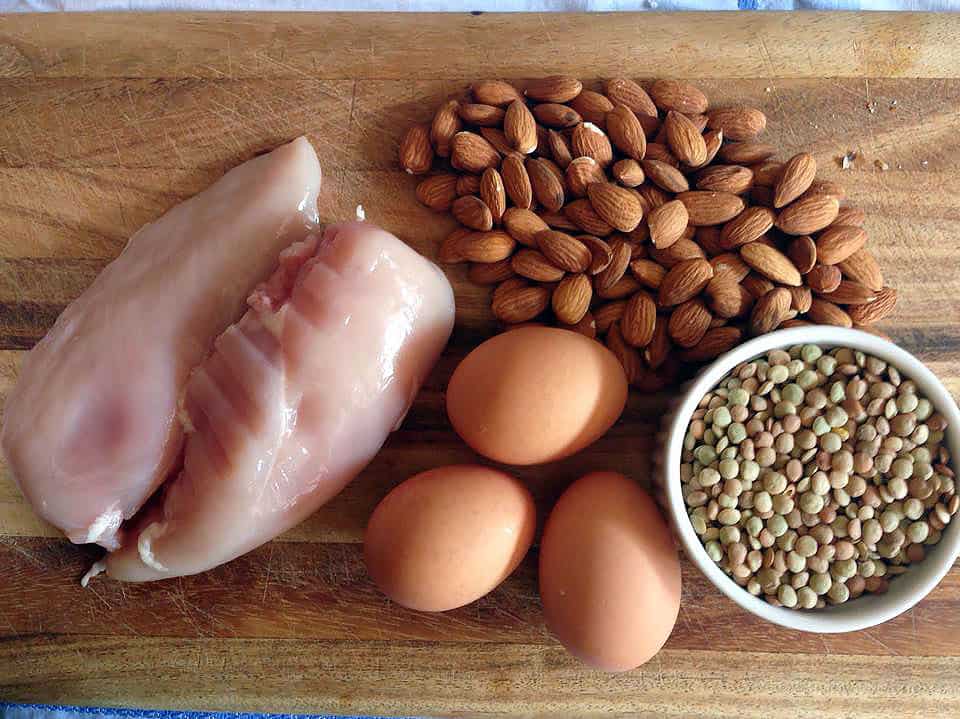Protein is an important macronutrient. It makes up the whole body because every cell contains protein. It plays a crucial role, from building tissues to hormones. Amino acids are the building blocks of protein, or what proteins are made of. The body needs 20 different amino acids, which join together to build different protein types. Eight of these are essential amino acids that are not made by the body but are rather obtained from food or supplements such as protein powder. The remaining 12 are nonessential amino acids that can be built by the body.
Like fats and carbohydrates, protein is a macronutrient. Protein is constantly broken and replaced so our body needs adequate supply of the nutrient to replace those that we have lost.
Protein Intake Recommendations
For adults, the Institute of Medicine recommends a minimum of 0.8 grams of protein for every kilogram of body weight per day. The Recommended Dietary Allowance for protein for women aged 19 and above is 46 grams per day, while for men aged 19 and above is 56 grams per day. As people age, the RDA of 0.8 grams may not be adequate. Today, experts recommend 1.2 grams per kilogram of body weight for older adults. They also suggest protein intake in every meal for protein building.
Protein Sources
Animal sources supply all the amino acids our body needs but these are not the only sources of protein. Protein can also be provided by some fruits, vegetables, nuts, grains and seeds, but they might not deliver all the types of amino acids we need. Eggs are good sources of protein, for it has around 6 grams of it in an easily digestible form.
Dairy foods such as milk are also packed with proteins, as well as yogurt, whey, fish, seafood and soya. In choosing protein sources, it is important to look at not just the amount of protein present in the food. Choose healthier options such as those that are low in fats, salt or additives.
How to Mix Protein into your Diet
Making sure that you are getting enough protein takes a bit of planning and some math. If you are not used to taking as much protein as you need, you might think that there is not enough meal in a day to ingest many grams of protein. On the contrary, it is possible, but you have to plan ahead. Les Mills says that the key is incorporating protein in every meal or snack you take within the day. For instance, if you weigh 150 pounds, you should eat 120 grams of protein in a day. You can break up the calories by having six meals a day with 20 grams of protein each. Here are ways to get such amount into your diet.
- Plan ahead. This is the best way to ensure that you are getting adequate protein each day. Know the foods that are rich in protein and list them.
- Switch to protein-rich snacks. Most grab and go snacks are rich in carbohydrates but you can go for a better option by choosing nuts over chips, or protein bars over energy bars.
- Eat variety of meats. Go for lean protein such as the ones provided by lobster, fishes and shrimp. It helps to eat a variety of protein. Aside from chicken breast, you can have turkey breast or pork loin.
- Remember to spread protein intake throughout the day. Our body can only absorb so much protein at a time, so it is not good to consume protein in one sitting. Incorporate it in your breakfast, lunch and dinner.
Our body needs protein because the nutrient performs crucial roles. We need enough good quality protein in our diet especially if we live an active lifestyle or if we are older. It is best to learn how much protein we need and how we can include it in our diet in order to make the most of the nutrient.

